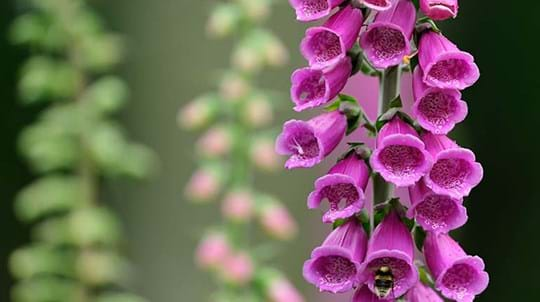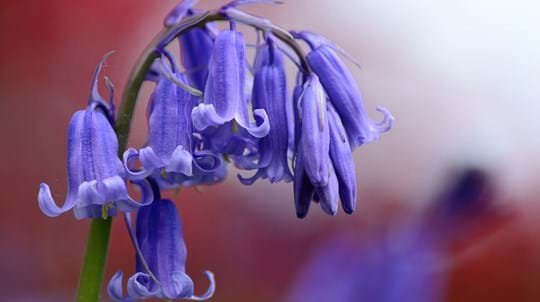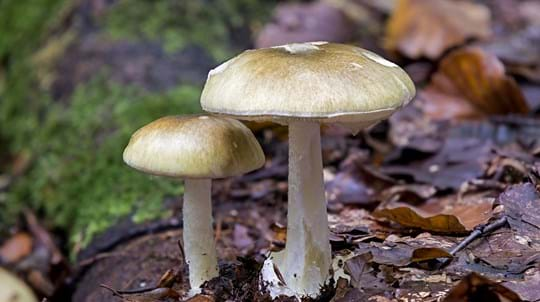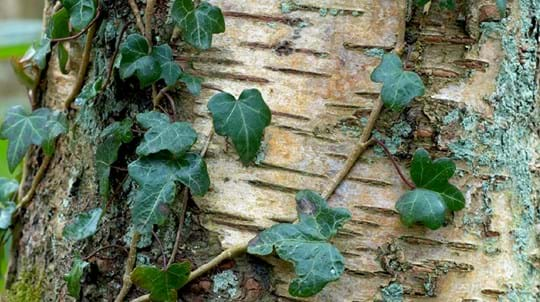
Blog
Foxglove and other poisonous plants: a list of toxic plants in the UK
Helen Keating • 01 Jul 2020

Content manager, botanist and tree lover
You may have heard about the dangers of giant hogweed – a non-native invasive plant which can cause burns. So we’ve put together the facts for you, from identification to staying safe.
Giant hogweed (Heracleum mantegazzianum) is a plant in the Apiaceae family (previously known as the Umbelliferae). This family includes some well-known plants such as parsley, carrot, parsnip, cumin and coriander.
Giant hogweed comes from southwest Asia and was first reported in the wild in the UK in 1828 in Cambridgeshire.
Giant hogweed is not native to the UK. It originates from the Caucasus Mountains and Central Asia. It was first introduced to the UK as an ornamental in the 19th century when it escaped and naturalised in the wild. It is now classed as an invasive species and can be found throughout much of the UK, especially colonising river banks where its seeds are transported by the water.
Common names: giant hogweed, giant cow parsnip, cartwheel plant, the Hog
Scientific name: Heracleum mantegazzianum
Family: Apiaceae
Habitat: derelict gardens, neglected urban places and waste ground, on rubbish tips, roadsides and by streams and rivers.
Flowering season: June and July.
Height: up to 5 metres.
Origin: UK non-native (native to southwest Asia).
Giant hogweed looks like an enormous cow parsley plant. When it's fully grown, it can reach towering heights of between 1.5m to 5m and have a spread of between 1 and 2m. It forms a rosette of jagged, lobed leaves in the first year before sending up a flower spike in the second year and then setting seed.
Green and often with purple blotches and stiff, white, bristly hairs. Stems are hollow with ridges and have a thick circle of hairs at the base of each leaf stalk.
Huge, up to 1.5m wide and 3m long, deeply divided into smaller leaflets. It looks a bit like a rhubarb leaf, with irregular and very sharp or jagged edges - which has given rise to one of its other common names - wild rhubarb. The underside of the leaf is hairy.
Appear in June and July. They are small and white (or slightly pink) and are clustered on umbrella-like heads known as umbels that can reach a diameter of 60cm. All the flowers on the umbel face upwards.
Dry, flattened and oval. Almost 1cm long with brown lines extending 3/4 of the seed length.
In short - the sap of giant hogweed can cause burns. It contains furocoumarin, which makes skin extremely sensitive to sunlight (phytophotodermatitis).
If the sap gets onto your skin and it's then exposed to the sun, your skin can blister badly. Blistering can then recur over months and even years. This is known as phytotoxicity.
The best way to avoid injury is to familiarise yourself with the plant and avoid contact with your skin. Brushing through patches of giant hogweed and exposing yourself to plants that have been cut might cause you to get sap on your skin.
If you do get giant hogweed sap on your skin, be sure to wash the area thoroughly and immediately. Seek medical advice and do not expose the area to sunlight for a few days.
It is illegal to plant or deliberately allow giant hogweed to spread in the UK. At a garden scale, individual plants can be removed by hand but this must be done in full protective clothing due to the danger posed by the sap. The best way to get rid of giant hogweed is to dig out the whole plant in spring before it flowers and sets seed. Since giant hogweed material is classed as ‘controlled waste’, it must be disposed of at a licensed landfill site.
Larger infestations are best left to professionals and may require the use of herbicides. If you come across giant hogweed on council-owned land then it can be reported to your local council, while infestations on private land should be brought to the attention of the landowner.
Here are some common plants that could be confused with giant hogweed with images and descriptions to help you with identification.
Common hogweed is very similar-looking to giant hogweed but is much smaller. Its stems aren’t blotchy like those of giant hogweed (their colour graduates smoothly from green to purple) and are ridged, hollow and hairy.
Common hogweed only reaches a maximum height of 2 metres (6ft 7) and the symmetrical flower heads only reach 20cm across. Its seeds are much smaller and lighter than those of giant hogweed, and the leaves are less jagged and more rounded at the edges than giant hogweed.
Cow parsley is a native plant common along hedgerows and roadsides. It grows to 60–170 cm and also has clusters of white flowers in umbels. The leaves are very different to giant hogweed - they are tripinnate (the leaflets are themselves divided and then these divisions are divided again). Confusingly, some people refer to giant hogweed as giant cow parsley.
Ground elder is a non-native plant (introduced by the Romans, possibly as an edible) which has made its way into the countryside and people's gardens. It is not related to elder trees (Sambucus nigra) but gets its name from having elder-like leaves. Its leaves are very different to giant hogweed, although it has similar flat-topped clusters of small white flowers which can grow to 20cm across.

Blog
Helen Keating • 01 Jul 2020

Blog
Hannah Vickers • 06 Apr 2020

Blog
Hanako Shimada • 19 Feb 2025

Blog
Kate Lewthwaite • 17 Aug 2021